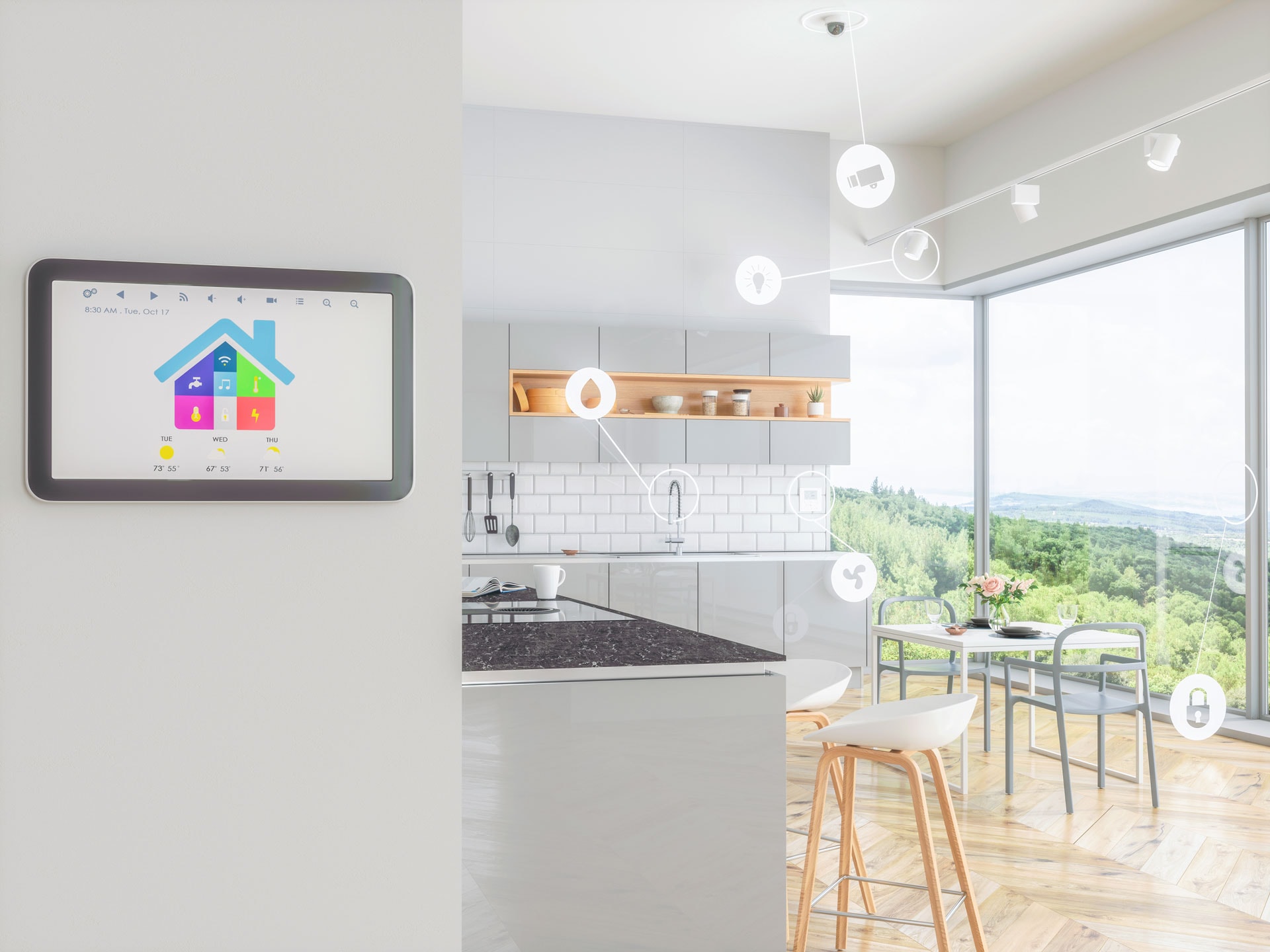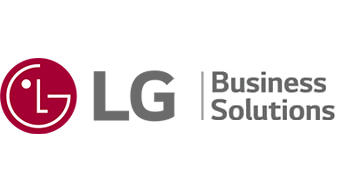The housing industry must then ask what factors play the largest role in Millennials’ housing choice. Two major considerations can be found at the convergence of sustainability and convenience. The need for all industries to make progressive steps toward more sustainable, connected products and practices can no longer be considered a nice-to-have but is a must-have in order to respond to the urgent need to combat climate change and to meet the priorities of today’s target consumers.
A home development project that invests in connectedness, sustainability and more would have traditionally been geared toward buyers looking for long-term investments with a different set of standards; however, nowadays, companies must make the same type of investment in ‘Build-to-rent’ projects in order to meet the standards of a new generation of renters.
A smart home is an innovative house connected to the Internet of Things (IoT), which refers to connectivity between home appliances, lighting, heating, air conditioning, security, and other devices. Data is then collected and applied to the automatic measurement of home conditions, management of home appliances, control of home access and more.
Moreover, Millennials are more interested in the reduction of carbon emissions, as they are certainly more eco-sensitive than previous generations.
According to Nielsen’s Global Corporate Sustainability Report, 66% of global respondents say that they are willing to pay more for products and services that come from companies with a commitment to having positive social and environmental impact.
[4] The home IoT learns users’ patterns, measuring and regulating energy consumption, in order to automatically react to prevent energy waste.
Quality assurance with IEQ and IAQ
Indoor Environmental Quality (IEQ) is another buzzword in the multi-family residential market. IEQ mainly refers to indoor air quality, noise level and illumination level of the interior.
The World Health Organization (WHO) announced that air pollution and climate change are two critical issues of its “Ten threats to global health in 2019”. Furthermore, according to “Building certification schemes and the quality of indoor environment,” a research paper published by Technical University of Denmark (DTU), IEQ is a growing priority for Millennials as they shift to a more adaptive and healthy lifestyle.
[5]Indeed, more than two-thirds of housing developers are using practices designed to improve indoor air quality and water efficiency according to the Green Single Family and Multifamily Homes 2020 Smart Market Brief, the latest in a series of studies conducted by Dodge Data & Analytics in partnership with the NAHB.
[6] As such, capabilities that enhance the IEQ and Indoor Air Quality (IAQ), a subset of IEQ, are now emerging as major considerations.
LG HVAC's residential solutions for Millennials
LG Electronics, a world-renowned home appliance & HVAC company, has created a line of smart home systems that seamlessly integrates into the residential HVAC and home appliance systems.
The company has introduced Multi V and a VRF system that perfectly align with the megatrends associated with multi-family residential segments, like sustainability and connectivity.
Multi V’s product lineup can provide cooling, heating, and hot water with a single energy-efficiency unit that uses eco-conscious refrigerant. Multi V’s Ultimate Inverter Compressor boasts a more powerful performance while consuming less energy. It also autonomously reacts to shifts in weather conditions and provides increased indoor air flow with less energy output.
This product lineup is also integrated into smart home systems through ThinQ, LG’s smart management system providing users with convenient and efficient functionality such as user-friendly remote access, and energy monitoring.
In addition to managing HVAC systems, LG ThinQ interconnects home appliances, providing users with solutions that fit their lifestyles. Furthermore, users can monitor cumulative power consumption in present, weekly, and monthly phases. By monitoring these, users can efficiently control heating and air conditioning devices according to outside weather conditions for cost and energy savings.
In addition to smart home technology, LG’s products include sensor technology which optimizes indoor air and environmental quality. They are equipped with dual sensing control, an exclusive automatic control function that detects both temperature and humidity, to maximize indoor comfort based on both conditions simultaneously.
“The multi-family residential market will change its paradigm with a generational shift of priorities toward eco-friendly solutions and connected smart homes,” said Mr. Hongju Jeon, President, LG Electronics Gulf. “Whether residential developers are building for renters or buyers, today’s consumers will consider connectivity and sustainability in their decision. LG’s residential HVAC lineup with Multi V, and ThinQ technology has been developed as a direct response to the multi-faceted needs of today’s consumers.”
# # #
About LG Electronics Air Solution Business Unit
LG Electronics’ Air Solution Business Unit is a global leader in HVAC and energy solutions with a comprehensive portfolio of proven expertise and performance. Launching Korea’s first residential air conditioner in 1968, LG has paved the way for total HVAC solutions over the last five decades through strategic utilization of advanced technologies. With a well-established production base and industry-leading capacity, the company provides effective HVAC solutions for both the commercial and residential sectors. Its wide range of cutting-edge systems for heating, ventilation and air conditioning truly represent LG’s initiative in offering the most optimized solutions for a variety of uses. Pursuant to its mission of “Innovation for a Better Life,” the company offers solutions boasting high energy efficiency and reliability based on its state-of-the-art knowhow and technologies to ensure the most optimal environment for users. For more information, please visit www.LG.com.
Media Contacts
LG Electronics Gulf FZE
Arbella Fernandez
Email: arbella.fernandez@lge.com
LG-One
Aaron Budwal
Account Executive
Email: aaron.budwal@lg-one.com
[1] “Single-Family Starts Will Gain Ground in 2020,” NAHBNow, last modified Jan 21, 2020, accessed Apr 29, 2020, http://nahbnow.com/2020/01/single-family-starts-will-gain-ground-in-2020
[2] “Why millennials are demanding more smart technology in their homes,” smarthomescompany, ac-cessed Apr 29, 2020, https://smarthomescompany.co.uk/blog/why-millennials-are-demanding-more-smart-technology-in-their-homes
[3] “Tech Update: Mobile & Social Media Usage, by Generation,” marketing charts, last modified May 9, 2018, accessed Apr 29, 2020, https://www.marketingcharts.com/Demographics-and-audiences-83363
[4] “GREEN GENERATION: MILLENNIALS SAY SUSTAINABILITY IS A SHOPPING PRIORITY,” Nielsen, last modified May 11, 2015, accessed Apr 29, 2020, https://www.nielsen.com/uk/en/insights/article/2015/green-generation-millennials-say-sustainability-is-a-shopping-priority/
[5] Da Silva, Nuno Alexandre Faria, Building certification schemes and the quality of indoor environment, 23
[6] “Study: Builders Increasingly Focusing on High-Performance Building Practices,” NAHBNow, last modified Jan 21, 2020, http://nahbnow.com/2020/01/study-builders-increasingly-focusing-on-high-performance-building-practices



